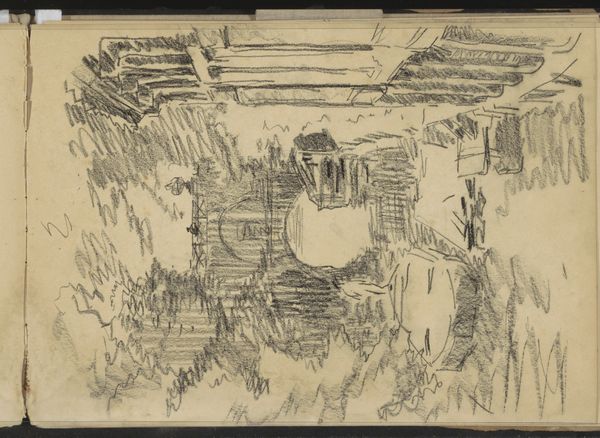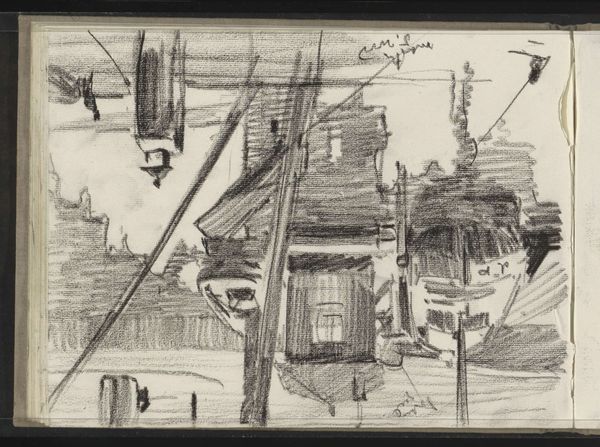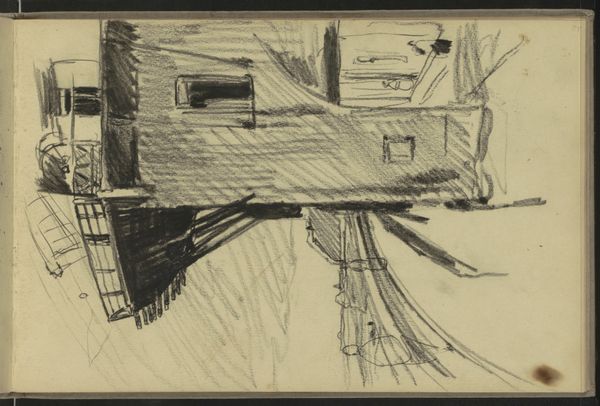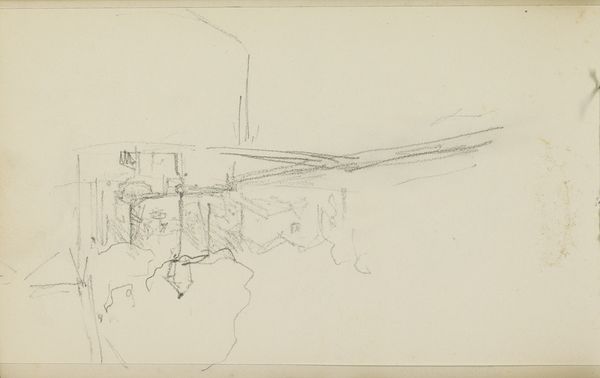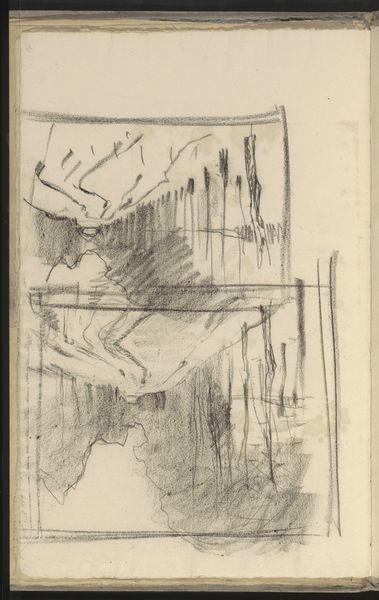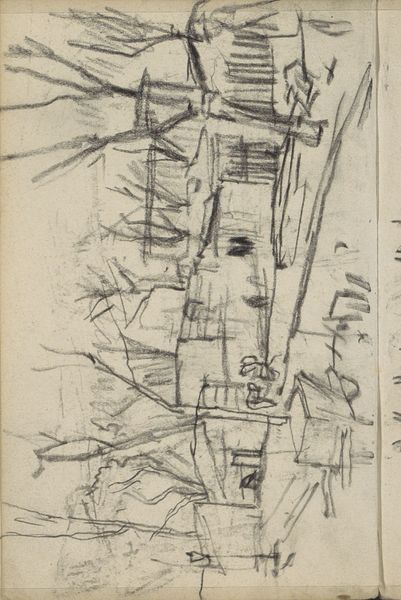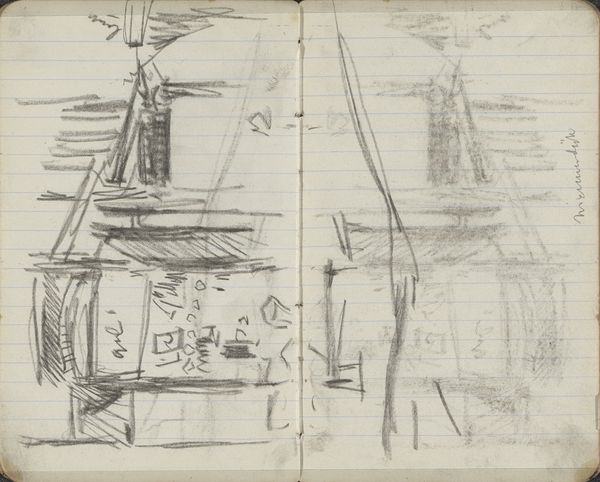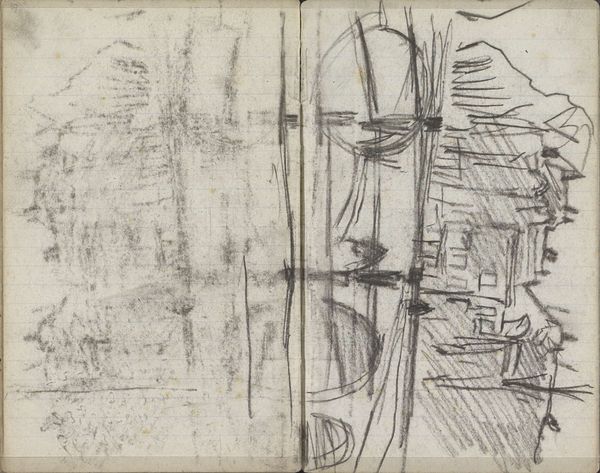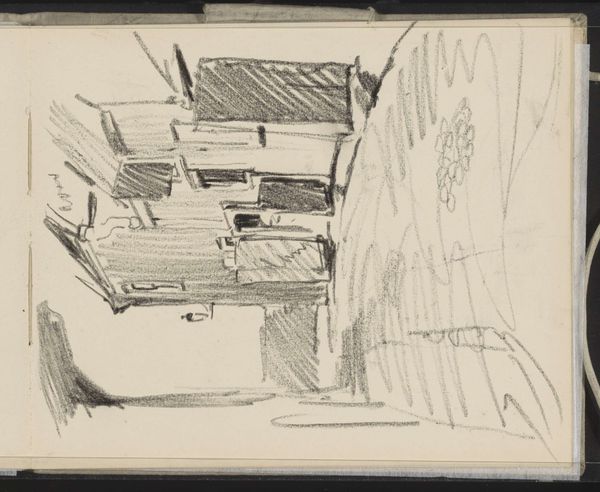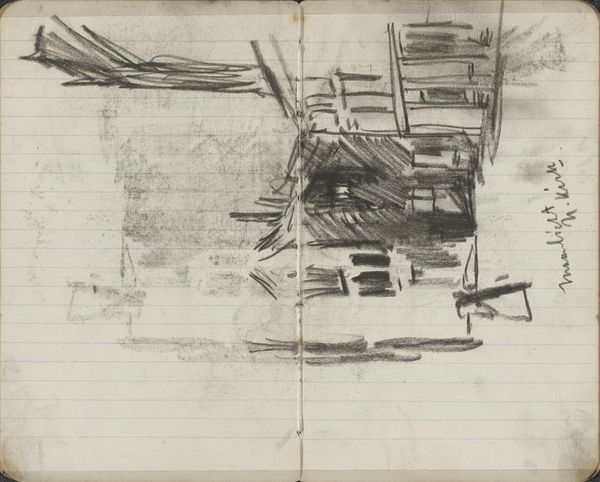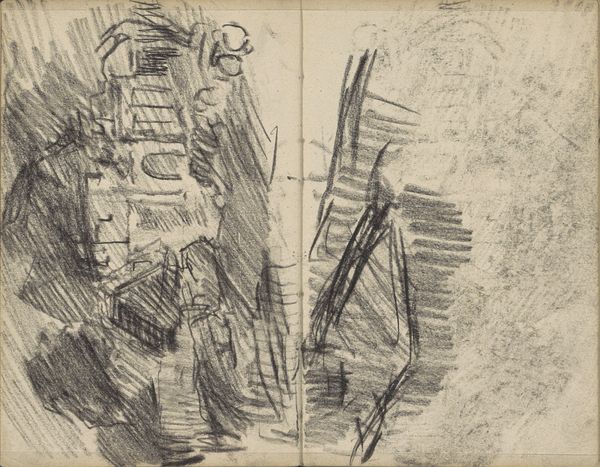
drawing, paper, pencil
#
drawing
#
quirky sketch
#
impressionism
#
pen sketch
#
sketch book
#
landscape
#
paper
#
personal sketchbook
#
sketchwork
#
ink drawing experimentation
#
pen-ink sketch
#
pencil
#
pen work
#
sketchbook drawing
#
sketchbook art
#
realism
Copyright: Rijks Museum: Open Domain
Curator: This is "Stellingkasten met manden," a drawing by Willem Witsen, likely created between 1884 and 1887. It resides here at the Rijksmuseum. Editor: My first impression is that it feels like a glimpse into an unorganized mind—or perhaps a cluttered storage space sketched quickly on the go. The perspective is intriguing, yet a little unsettling. Curator: Indeed. The lack of precise lines lends itself to Impressionism. The structural arrangement is quite remarkable— observe how Witsen used varied strokes to indicate form and depth. Consider how the artist's focus seemingly drifts as we study from left to right. The heavy hatching creates different densities to show cast shadows and areas of low visibility. Editor: Given that Witsen often depicted scenes from the art world and creative industries, this may offer insight into the very context in which he operated. The objects here probably represented something particular. Perhaps Witsen meant this piece to stand as a snapshot of the artist's workshop. It feels unpretentious in its casual form. Curator: Yes, this casual air allows for visual study. Witsen uses multiple overlapping planes, framed by thick lines which suggests the wall edges and then continues into much finer and deliberate pencil marks for things further back into space. It gives it that fragmented feel, something fleeting, almost as if seen through the lens of memory rather than immediate perception. Editor: Perhaps this fragment conveys the everyday conditions and visual world around late 19th-century artists, with all its material complexities and practical realities that fed their imaginative life. Or perhaps this "interior," with all its structures and layers, acts as a portrait for Witsen himself. Curator: A persuasive argument that blends historical context with structuralist methodology. We can consider how these raw visual data speak both directly and indirectly to the artistic milieu from which the artist emerged. Editor: And perhaps it invites us to consider the overlooked: the often-untidy backstages and working environments from which beautiful artworks often materialize. Curator: Quite right, it allows a renewed appreciation. Editor: I see this little sketch with fresher eyes now, it's charming.
Comments
No comments
Be the first to comment and join the conversation on the ultimate creative platform.
